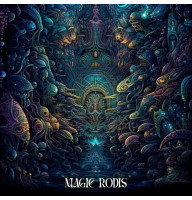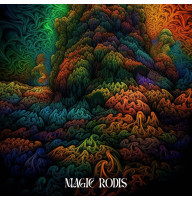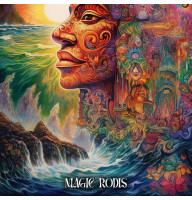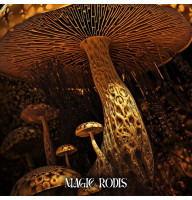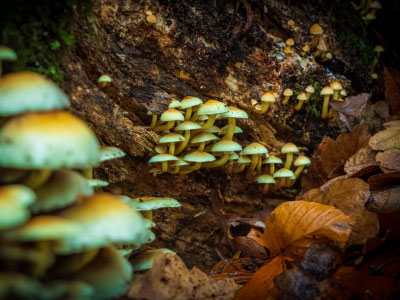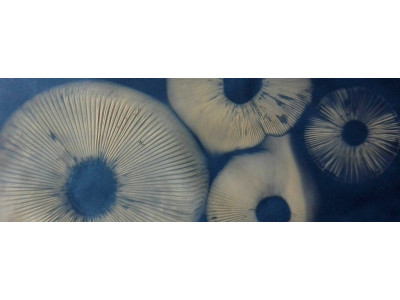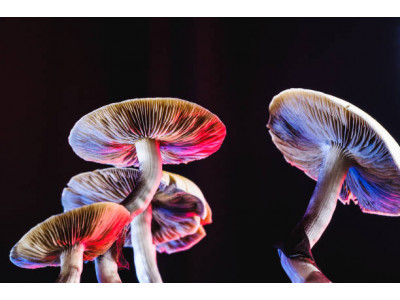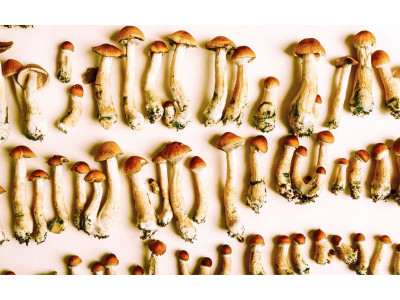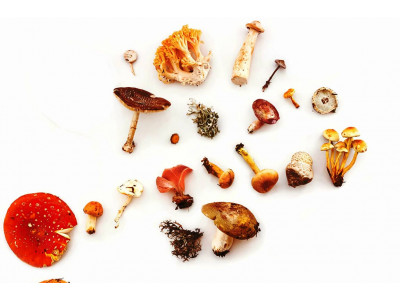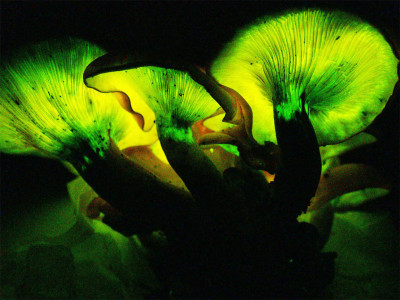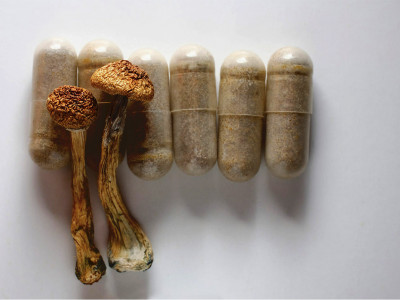Fly agaricides grow from the ground near coniferous and broadleaf trees and can be common in late summer and fall. They are fairly large and sturdy amanitas with a cap often wider than the length of the stem. They occur in a variety of color forms with nearly white, yellow, orange, dark red and even brown caps. The fly agaric is one of the most conspicuous and showy mushrooms, familiar to most people as the classic grebe. It is rarely consumed accidentally.
Varieties of the Amanita Muscaria flytrap
There are several color forms of Amanita, which were previously officially recognized as varieties:
- White caps with brownish warts and a white stalk that turns yellowish when handled characterize the alba variety, which is common in eastern North America but rarely found in the west;
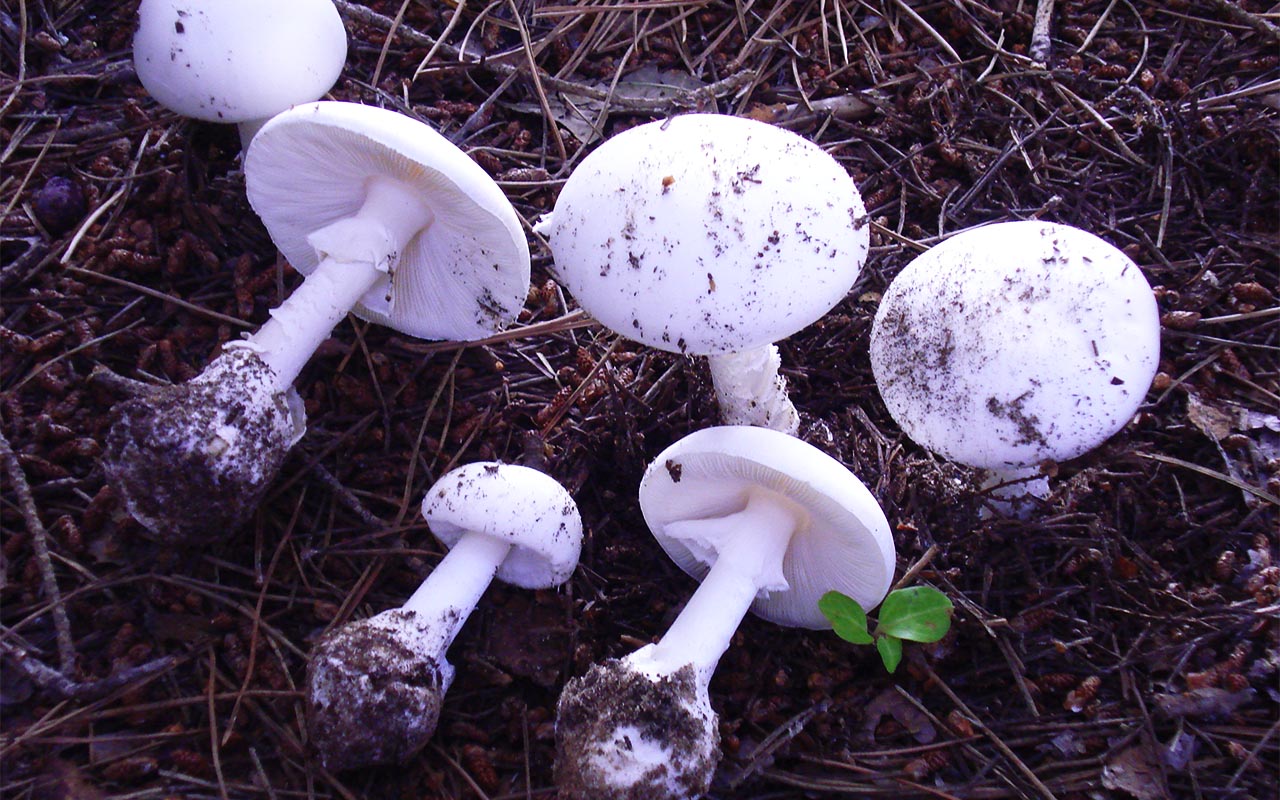
- Yellow or yellow-orange caps with yellowish or pale yellow warts and a white stem surface becoming yellowish when handled were thought to belong to the formosa variety. They are common in the west, especially under poplars and in pine forests;
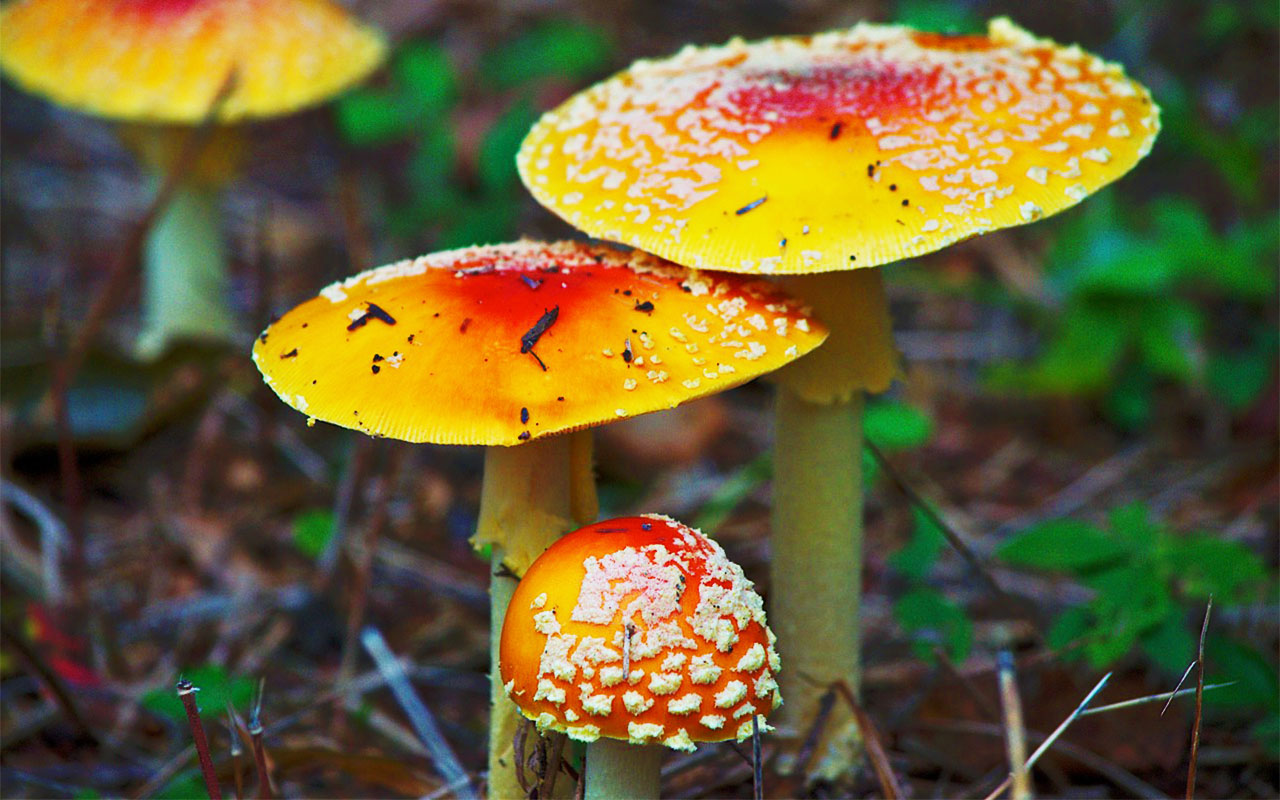
- Bright red or orange-red caps with distinctly yellowish warts and yellowish volva remnants, and a white stem surface that becomes tannic when treated. These have been assigned to the flavivolvata variety;
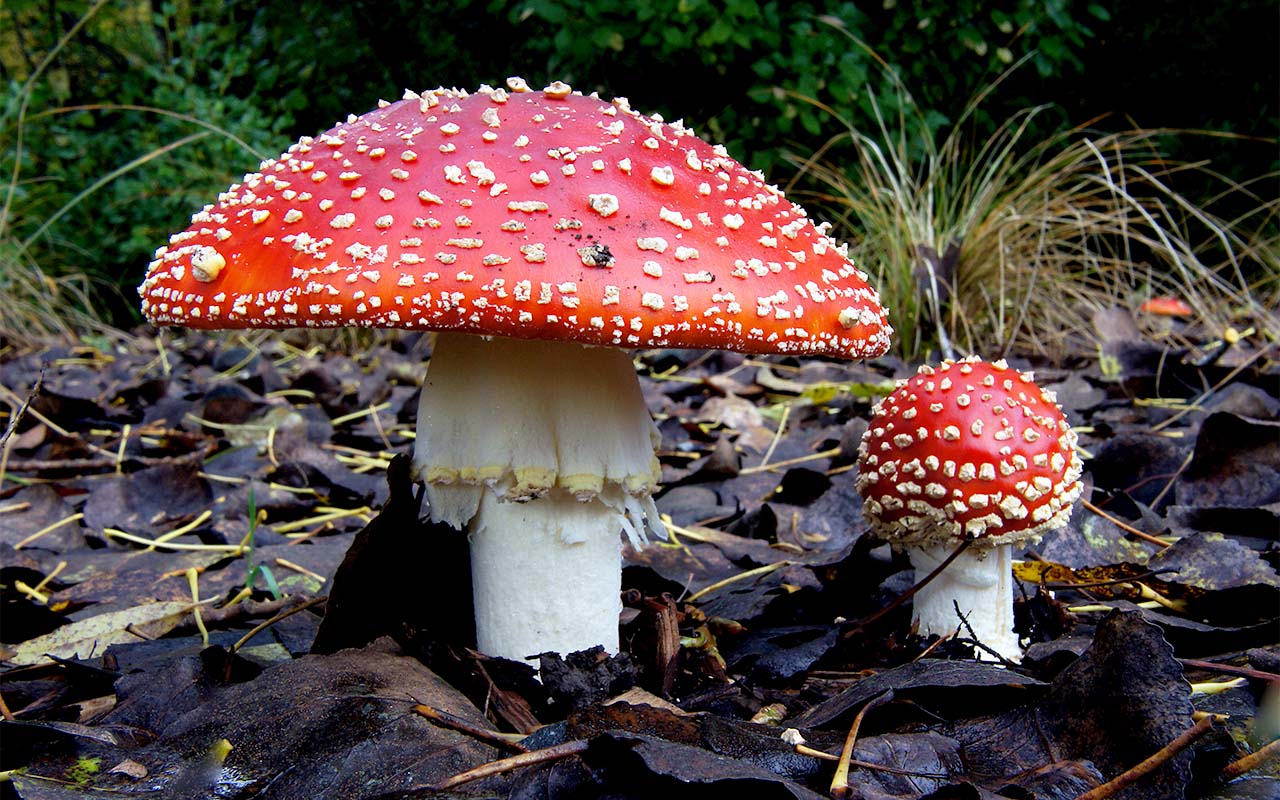
- The brown caps indicate a rare form of Amanita muscaria called the regalis variety. Although this mushroom is similar to the panther mushroom, the volvulus at the base of the bulb is a series of more or less diagonal loose friable cotton-wool yellowish-white bands rising up the stem, rather than a sharp single white collar or rim.
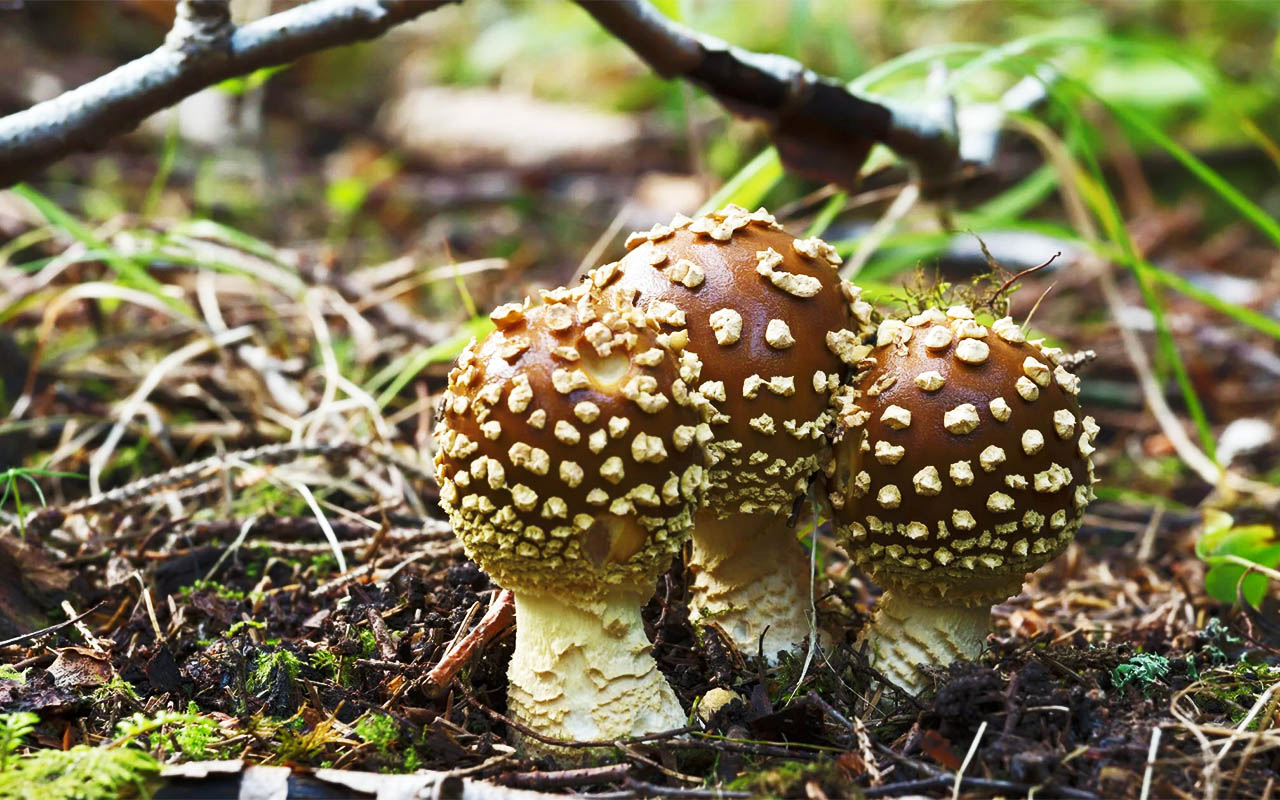
Amanita muscaria: potential for treating Alzheimer's and related dementias
The psychedelic mushroom Amanita muscaria (and other Amanita species) contains the compounds muscimol and ibotenic acid, as well as small amounts of muscarinic and muscasone. The psychedelic properties of Amanita are remarkable despite their difference from the typical effects of psilocybin. Instead of the typical serotoninergic agonist effects of 5-HT2A psychedelics, the main psychoactive compound in A. muscaria (muscimol) resembles the neurotransmitter GABA and interacts with GABA receptors. Another psychoactive compound, ibotenic acid, acts on glutamate receptors.
Muscarin and muscimol are promising drugs for the treatment of neurodegenerative diseases accompanied by cognitive decline and severe amnestic disorders.
Muscarinic is a high-affinity selective agonist of muscarinic acetylcholine receptors (mAChRs), a group of GPCRs located on several types of neurons, including postganglionic fibers of the parasympathetic nervous system. Several of the mAChR subtypes are enriched in the human cerebral cortex, especially the M1, M2 and M4 receptors, which predominate in the CNS and are involved in the regulation of neuronal excitability and neuroplasticity. Their localization and significant functional selectivity make them ideal targets for the treatment of AD and schizophrenia.
Muscimol is a psychotropic isoxazole derived from ibotenic acid by decarboxylation, so it is considered a prodrug of muscimol in mammalian systems. Ibotenic acid is rapidly metabolized in the mammalian liver to the more stable and biologically active muscimol, making muscimol a more attractive pharmacological target for therapeutic use. When administered enterally or parenterally, muscimol rapidly penetrates GABA, exhibiting selective and potent agonist activity against GABA A receptors (GABA A R).
In rodent studies in the treatment of Alzheimer's disease, muscimol showed potent enhancing effects on memory and learning, even at very low doses. These effects include muscimol-mediated significant downregulation of hippocampal and cortical proteins involved in neuroinflammation and reactive astrocyte gliosis, such as GFAP, as well as modulation of enzymes critical for GABA synthesis.
Conclusion
Chronic modulation of GABA A R by muscimol significantly reduces Aβ-induced neurotoxicity in cultured rat cortical neurons, and this effect is completely suppressed/prevented by bicuculline, a specific GABA A R antagonist. Low doses of muscimol administered directly into the subthalamic nuclei also eliminated parkinsonism in a small study involving humans, reduced cognitive impairment. And, they improved spatial memory in the APP/PS mouse model of Alzheimer's disease, indicating the therapeutic potential of muscimol with respect to neuropathologies and homeostasis.
These results are important because the activity of large-scale neuronal networks is abnormally elevated in the brains of Alzheimer's disease patients, and animal models suggest that reduced activity of GABAergic inhibitory neurons may contribute to the observed Aβ-induced cognitive impairments.


